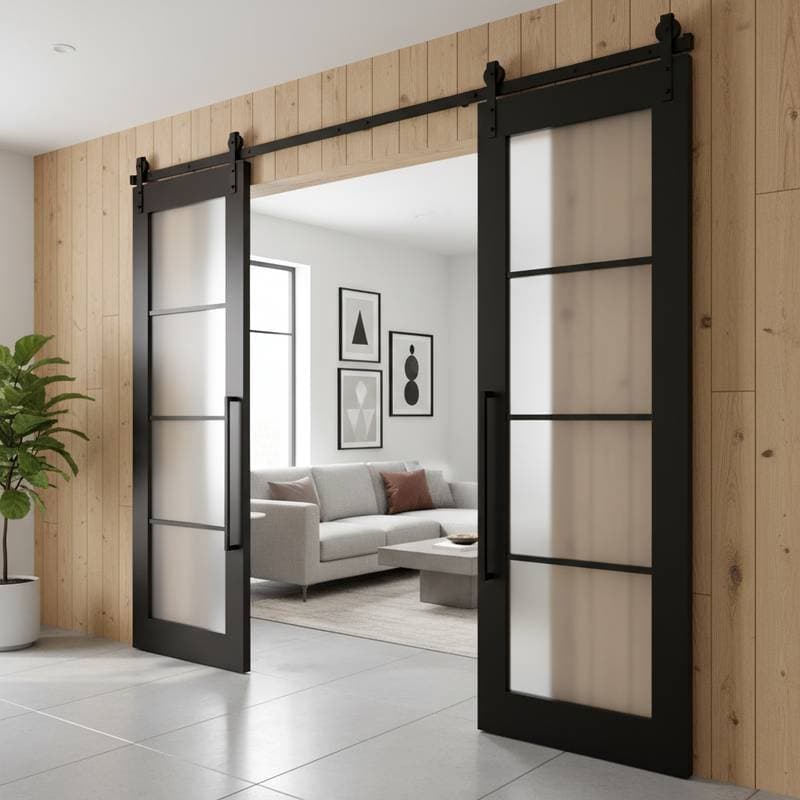Japandi Door Hardware: The 2025 Minimalist Essential
Japandi door hardware emerges as a pivotal trend for those who seek serene, purposeful interiors. This style integrates the inviting simplicity of Scandinavian design with the meticulous harmony of Japanese traditions. The outcome yields spaces that exude balance, enduring style, and subtle modernity. Applied to interior doors, such hardware elevates standard passages into thoughtful elements that enhance both aesthetics and practicality.
Core Principles of Japandi Door Hardware
Japandi design thrives on deliberate minimalism. It eschews elaborate details in favor of balanced proportions, varied textures, and inviting touch. Hardware in this vein typically includes sleek profiles, gentle curves, and surfaces that accentuate materials like brushed aluminum or satin nickel. Every component integrates purposefully, enhancing the room without drawing undue attention.
The underlying ethos stresses durability and skilled execution. Individuals appreciate hardware that combines refined appearance with reliable performance over decades. This mindset promotes selections of robust materials that develop character gracefully, steering clear of transient trends.
Selecting Materials and Finishes
Material selection forms the cornerstone of authentic Japandi aesthetics. Options such as brass, stainless steel, or aged bronze prevail, yet the surface treatment defines the overall effect. Opt for brushed or satin finishes to achieve a subdued, earthy vibe. Avoid shiny or mirrored options, as they disrupt the tranquil flow of the environment.
Incorporate wooden elements for added warmth. Consider levers or escutcheons crafted from oak, walnut, or bamboo that align with the door's natural finish. This pairing fosters continuity between hardware and surface, embodying Japandi's fusion of organic and metallic influences.
Prioritizing Ergonomics and Performance
Japandi hardware extends beyond looks to emphasize user comfort. Levers feature ergonomic contours, with ergonomic grips that fit the hand naturally and promote effortless operation. Such details align with the belief that form must support function without fanfare.
Incorporate soft-close hinges and quiet latches to amplify home serenity. These features minimize disturbances and contribute to a peaceful atmosphere. In renovations of vintage homes, retrofitting with these elements refreshes both style and usability seamlessly.
Installation Essentials and Compatibility
Evaluate door specifications prior to any changes, including thickness, style, and pre-existing bore holes. Japandi hardware comes in adaptable sizes, from standard levers to custom pulls, ensuring fit with diverse door types. Professional assistance often proves valuable for precise fitting, particularly when adapting from ornate legacy pieces.
Uniformity across the residence amplifies impact. Coordinate finishes on doors, cabinets, and accents to sustain the unified tranquility central to Japandi. Test operations post-installation to confirm smooth, whisper-quiet function.
Japandi Versus Other Minimalist Approaches
While minimalist hardware shares ground with modern or mid-century variants, Japandi stands out for its nurturing quality and sensory appeal. Industrial styles may expose fasteners or employ stark metals, but Japandi opts for refined subtlety. Its palettes remain neutral, forms fluid, delivering minimalism infused with subtle emotion over cold precision.
The following table highlights distinctions among minimalist hardware categories.
| Style | Common Materials | Finish Type | Key Traits | Best Suited For |
|---|---|---|---|---|
| Japandi | Wood, brass, matte steel | Brushed, natural | Warm, harmonious, sensory | Serene, nature-inspired homes |
| Industrial | Iron, chrome, raw metal | Polished, exposed | Robust, functional | Urban lofts, edgy settings |
| Scandinavian | Light woods, soft metals | Subtle matte | Fresh, lightweight, natural | Bright, inviting minimalism |
Sustaining Quality Through Care
Routine maintenance preserves the understated elegance of Japandi hardware. For matte or textured metals, employ soft cloths and mild soap solutions to remove dust. Steer clear of harsh chemicals that might erode the nuanced patina.
Wooden components benefit from occasional conditioning with natural oils like tung or linseed to retain moisture and vibrancy. High-caliber pieces demand less upkeep and endure style evolutions, aligning with Japandi's commitment to sustainability by curtailing replacements.
Tailoring Selections to Your Space
Assess your home's architecture and current palette when choosing Japandi hardware. For expansive rooms, select longer levers in warm brass to draw the eye subtly. In compact areas, compact matte black options maintain openness without overwhelming.
Consult samples under your lighting conditions to verify harmony. Factor in traffic patterns; high-use doors warrant reinforced hinges for sustained performance. This thoughtful process ensures hardware not only fits but elevates your daily environment.
Steps for Seamless Integration
Begin by documenting measurements for each door, noting hinge placements and strike plate positions. Verify hardware kits include necessary screws and templates for accurate drilling. If undertaking DIY, gather tools like a drill guide and level to avoid misalignment.
For cohesive results, apply the same series throughout connected areas, such as hallways or suites. After securing, lubricate moving parts with silicone-based products to guarantee fluid motion. This preparation transforms routine updates into lasting enhancements that foster calm and continuity.






